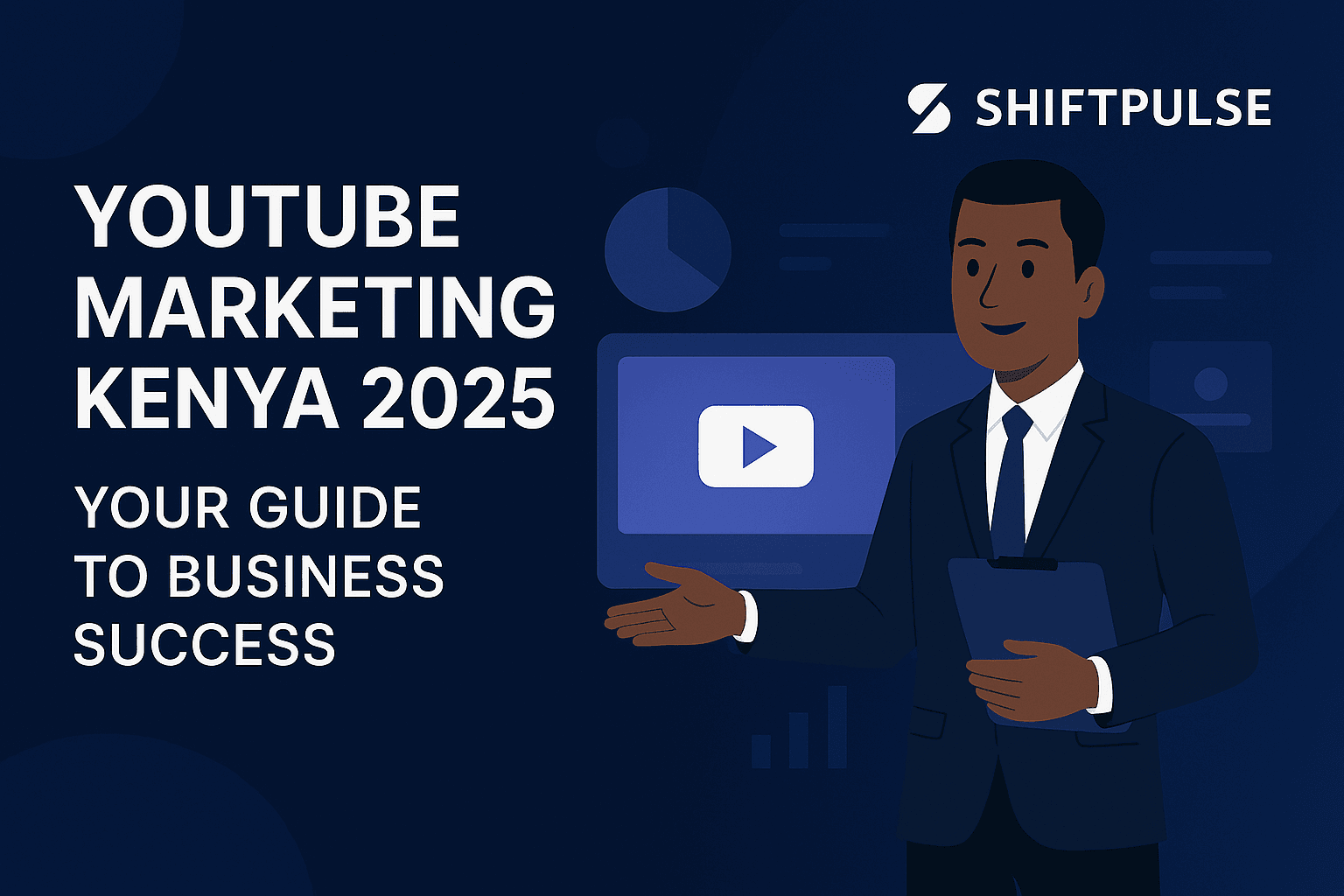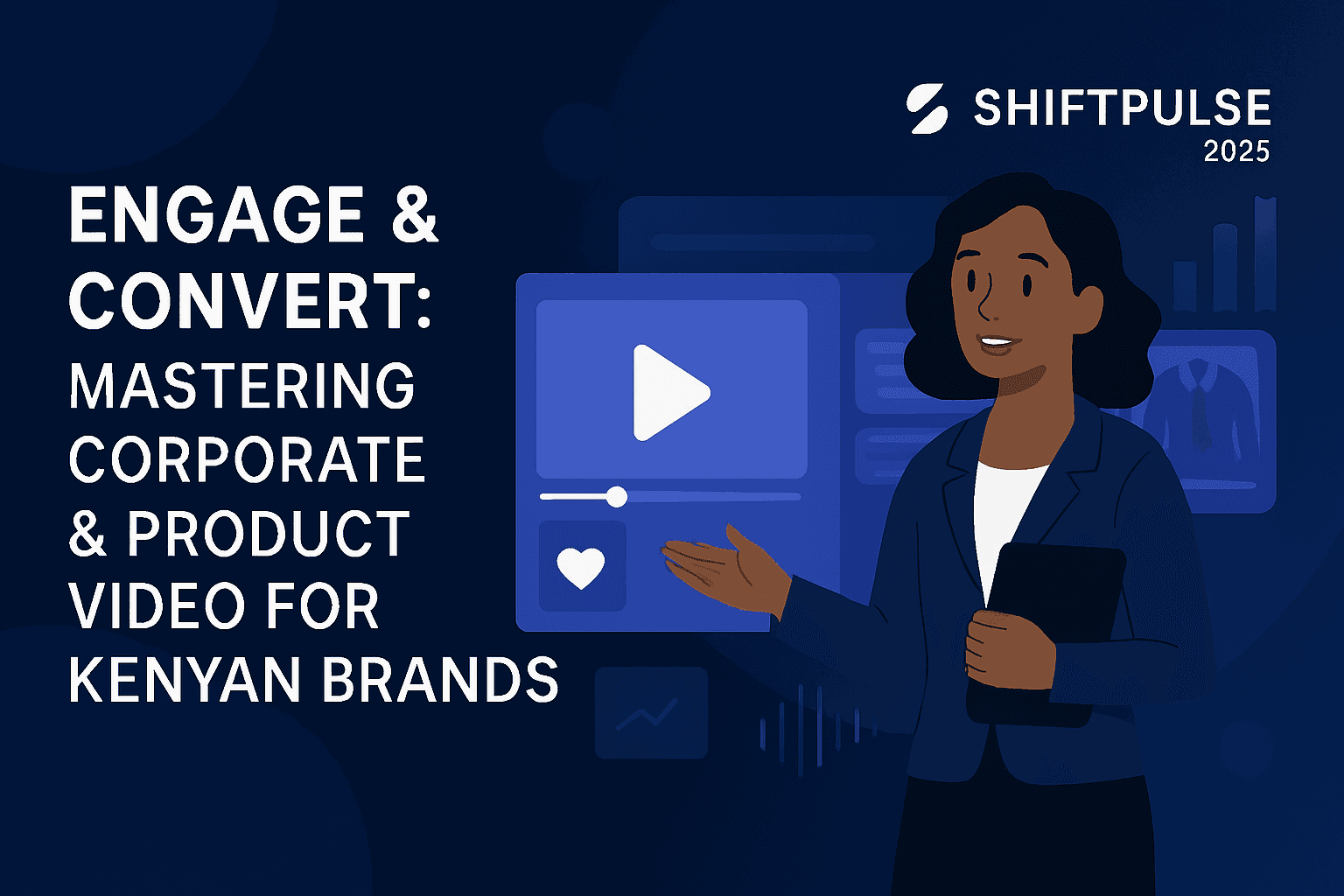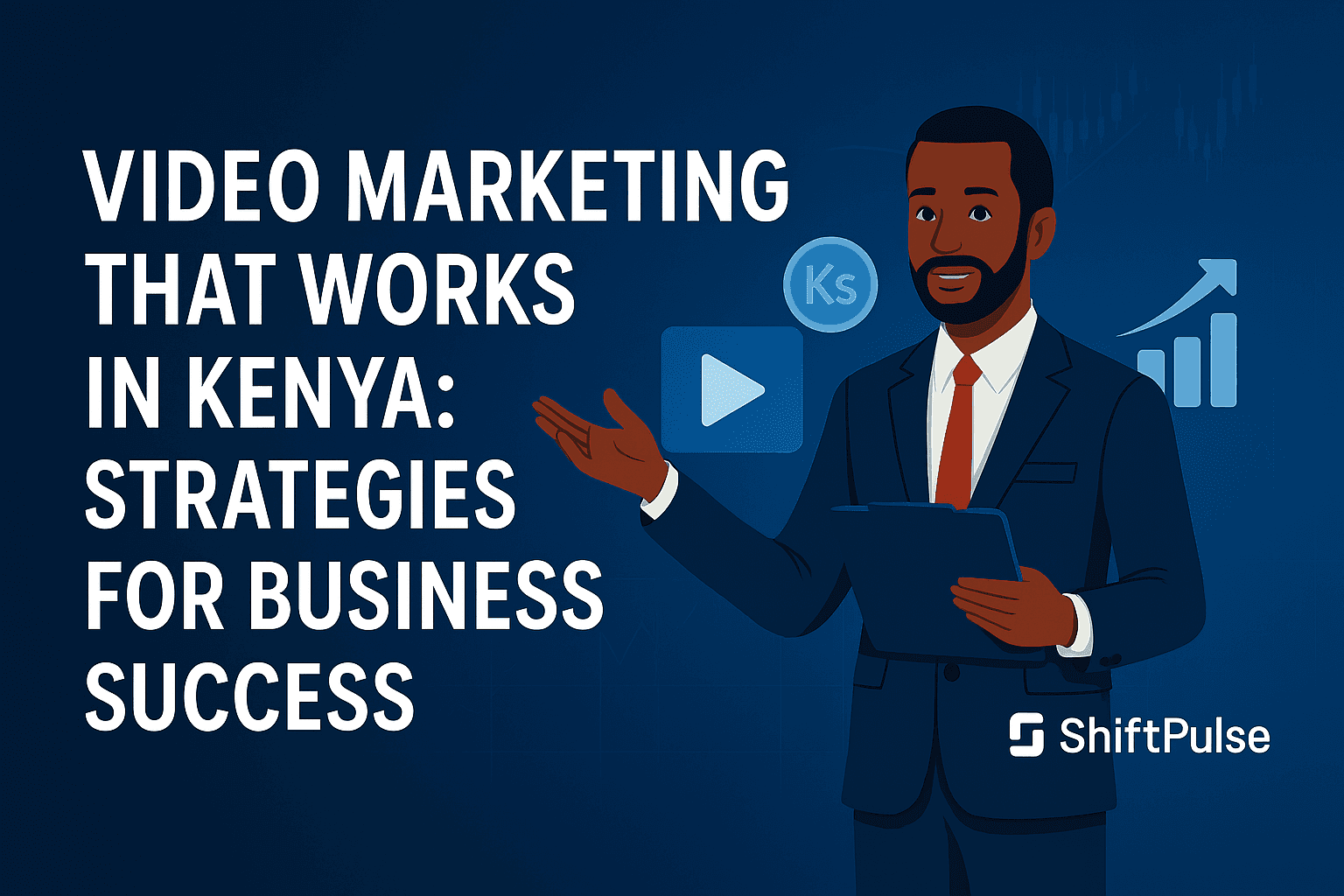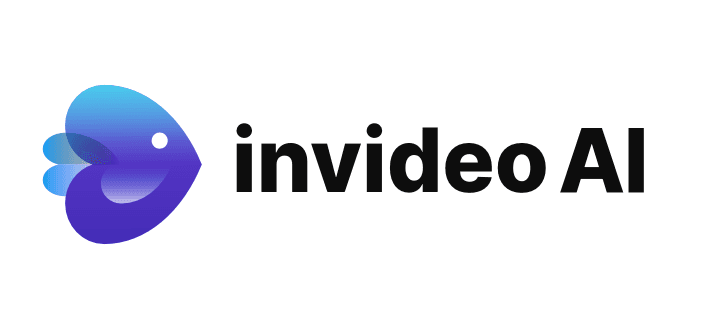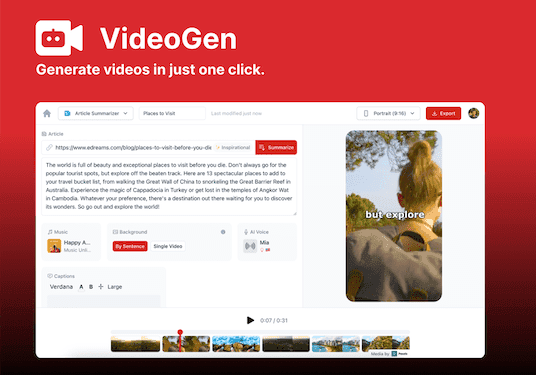
Ann Kariuki
Shiftpulse Marketers
Deep Dive into the SEO Strategies of Top Educational YouTube Channels

TL;DR: Educational YouTube channels continue to thrive in 2025, leveraging SEO strategies to expand their reach. Top channels like Vsauce and Kurzgesagt optimize content through posting frequency, keyword targeting, and audience engagement, offering valuable lessons for content creators and educators aiming to grow their digital presence.
YouTube has become a primary source of educational content for millions of people worldwide 1. With the rise of educational YouTube channels, it's more important than ever to understand the strategies these channels use to reach their target audience. This deep dive will explore the SEO strategies of top educational YouTube channels, providing valuable insights for content creators and educators alike.
Top Educational YouTube Channels in 2025
To begin our analysis, we first identified the top educational YouTube channels in 2025. Several sources provided lists of popular channels, with some overlap and some variation in ranking. Here are a few of the most frequently mentioned channels, along with their subscriber count and posting frequency (information gathered from a recent analysis of educational YouTube channels) 2:
- Vsauce: 21.1M subscribers, posts 2 videos per week.
- Kurzgesagt: 22.4M subscribers, posts 2 videos per week, targets ages 8 and older.
- NileRed: 6.4M subscribers, posts 8 videos per year.
- SmarterEveryDay: 11.5M subscribers, posts 11 videos per year.
- Today I Found Out: 2.2M subscribers, posts 3 videos per week.
- TED-Ed: 20.5M subscribers, targets ages 8 and older.
- Khan Academy: 8.6M subscribers, targets ages 10 and older.
- CrashCourse: 15.9M subscribers.
- National Geographic Kids: 1.27M subscribers, targets ages 3 and older.
- SciShow Kids: 1.23M subscribers, targets ages 5-10.
These channels cover a wide range of educational topics, from science and mathematics to history and culture. They employ diverse video formats, including animation, live-action demonstrations, and interviews, and cater to a variety of age groups and learning styles. For example, Crash Course Kids specifically targets fifth graders (ages 9-12) with content on topics like gravity, food chains, and Newtonian fluids 3.
SEO Strategies for YouTube
Before diving into the specific strategies used by these channels, it's essential to understand the basics of YouTube SEO. Several articles and resources provided valuable insights into this topic. Key elements of YouTube SEO include:
- Keyword research: Identifying relevant keywords is crucial for any SEO strategy. This involves brainstorming potential video topics and analyzing what viewers are searching for. Tools like YouTube's search bar, Google Trends, and Google's Keyword Planner can be helpful for this process 4. Keyword research should focus on finding a balance between high-demand and low-competition terms, allowing creators to target a specific audience while minimizing competition. Niching down video topics to focus on specific subtopics within a broader niche can be an effective way to achieve this 4. It's also important to consider both branded and non-branded keywords to reach both existing and new audiences 5.
- Video optimization: Creating high-quality videos with engaging content is essential for attracting and retaining viewers. This includes using clear audio, visually appealing thumbnails, and a concise and informative video structure. Experts recommend keeping videos between 7 and 15 minutes to maximize user engagement and watch time 6.
- Channel optimization: Building a strong channel with a consistent brand identity helps establish credibility and attract subscribers. This includes providing complete channel information, organizing videos into playlists, and maintaining a consistent visual style and tone.
- Engagement: Encouraging viewer interaction through comments, likes, shares, and subscriptions helps build a community and increase video visibility. Responding to comments and actively participating in discussions can further strengthen the connection between creators and viewers.
- Promotion: Sharing videos on social media and other platforms helps increase visibility and reach a wider audience. This can include embedding videos on websites, sharing links on social media, and collaborating with other creators.
- Schema markup: Using schema markup helps search engines understand the content on a webpage, which can improve visibility and search rankings 5.
- Indexability and crawlability: These factors ensure that search engines can easily find and index video content. This involves using robots.txt files to guide search engines, adding canonical tags to handle duplicate content, and setting meta tag directives to control indexing 5.
Tools and Resources
Several tools and resources are available for YouTube SEO research and analysis. These include:
- YouTube Analytics: Provides data on video performance, audience demographics, and engagement metrics.
- TubeBuddy: A browser extension that offers tools for keyword research, video optimization, and channel management.
- vidIQ: A similar tool that provides insights into video performance and competitor analysis to create an account click here to increase you channel views and earnings.
These tools can help creators track their progress, identify areas for improvement, and optimize their content for better search visibility.
Analysis of Titles, Descriptions, and Tags
We analyzed the titles, descriptions, and tags used by the top educational YouTube channels to identify common strategies. Here are some key observations, presented in a tabular format for easier comparison:
Channel
Title Example
Description Features
Tags Example
Vsauce
What Color Is a Mirror?
Clear and concise, often includes keywords, intriguing and informative
Kurzgesagt
The Egg - A Short Story
Detailed, provides background information, summarizes key takeaways, includes links to sources and further reading 7
NileRed
Making the World's Blackest Material
Uses a variety of keywords, both specific and broad in scope
chemistry, experiment, chemicals, science, education, DIY
SmarterEveryDay
How to Light a Bonfire With Rockets
Today I Found Out
How Halloween & Trick-or-Treating First Started
These channels employ a variety of strategies to optimize their titles, descriptions, and tags. They use clear and concise titles that accurately reflect the video content and often include relevant keywords. They also provide detailed descriptions that offer comprehensive information about the video, including links to related resources and social media channels. Additionally, they use relevant tags that are carefully chosen to match the video content and improve searchability. It's important to note that these channels use a combination of branded and non-branded keywords in their titles and descriptions to reach both existing and new audiences 5.
Analysis of Content
We analyzed the content of the top educational YouTube channels, focusing on keywords and topics covered. Here are some key observations:
- High-quality content: Videos are well-researched, informative, and engaging, providing valuable insights and explanations.
- Strategic use of keywords: Keywords are naturally incorporated into the video script and narration, ensuring relevance without keyword stuffing.
- Diverse topics: Channels cover a wide range of topics within their niche, catering to diverse interests and learning styles.
For example, Vsauce videos often delve into complex scientific or philosophical concepts, breaking them down into digestible segments and using creative visuals and analogies to aid understanding. One example is the video "Is Anything Real?" where Michael Stevens explores various scientific, philosophical, and psychological perspectives on the nature of reality 8. Kurzgesagt videos employ a distinctive animation style and a narrative approach to explain complex topics in a clear and concise manner 9. For instance, in the video "The Egg - A Short Story," Kurzgesagt uses a captivating narrative and stunning visuals to explore themes of existence, the universe, and the interconnectedness of life. NileRed videos focus on chemistry experiments and demonstrations, providing step-by-step instructions and detailed explanations of the underlying chemical processes.
Vsauce's Approach to Content Creation
Vsauce, hosted by Michael Stevens, has a unique approach to content creation that has contributed to its success. Stevens often starts with a simple, seemingly mundane question and then explores it in a tangential manner, delving into related facts, observations, and interpretations. This approach allows him to cover a wide range of topics while maintaining a sense of curiosity and wonder10. He also emphasizes the importance of authenticity and engagement, creating content that resonates with viewers and actively interacting with the audience through comments and social media11.
NileRed's Unique Content Strategy
NileRed, hosted by Nigel Braun, centers his video ideas around a unique strategy: taking something that isn't usually possible and making it possible in an almost outlandish, unbelievable way12. This approach immediately challenges the viewer's beliefs and hooks them into seeing what will happen in the video. For example, in the video "Turning a Glove into Hot Sauce," Braun takes an everyday object and transforms it into something unexpected and intriguing. This strategy, combined with his skills as a scientist and engineer, allows him to create content that is both informative and captivating.
Today I Found Out's Collaboration Strategy
Today I Found Out, hosted by Simon Whistler, highlights the benefits of collaborating with a partner on YouTube13. This approach allows creators to split the workload, leverage each other's strengths, and maintain a consistent posting schedule. For example, Whistler collaborates with other creators like Daven Hiskey and Samuel Avila to produce and host videos, allowing them to cover a wider range of topics and produce content more efficiently.
Summary of Key SEO Strategies
Based on our analysis, here are some of the key SEO strategies used by top educational YouTube channels:
- Thorough keyword research: Identifying relevant keywords and incorporating them naturally into video titles, descriptions, tags, and content.
- High-quality content: Creating informative, engaging, and well-researched videos that provide value to viewers.
- Clear and concise titles: Using titles that accurately reflect the video content and include relevant keywords.
- Detailed descriptions: Providing comprehensive information about the video, including links to related resources and social media channels.
- Visually appealing thumbnails: Creating custom thumbnails that are eye-catching and relevant to the video content.
- Consistent branding: Establishing a strong channel identity with a consistent visual style and tone.
- Organized playlists: Grouping related videos into playlists to improve user experience and channel organization.
- Active engagement: Encouraging viewer interaction through comments, likes, shares, and subscriptions.
- Cross-promotion: Sharing videos on social media and other platforms to increase visibility and reach.
- Optimizing captions and transcripts: Ensuring captions and transcripts are accurate and include relevant keywords can improve accessibility and search visibility6.
By implementing these strategies, educational YouTube channels can improve their search visibility, reach a wider audience, and achieve their content goals.
Conclusion
The success of top educational YouTube channels is not accidental. These channels employ a combination of SEO strategies, content creation expertise, and audience engagement techniques to reach their target audience and achieve their goals. By understanding and implementing these strategies, educators and content creators can leverage the power of YouTube to share knowledge, inspire learning, and make a positive impact on the world.
Take inspiration from the channels analyzed in this article and experiment with different approaches to find what works best for your content and audience. Don't be afraid to try new things, analyze your results, and continuously refine your strategies to maximize your impact and reach.
Works cited
1. YouTube's Smarter Every Day: Uncovering the Science Around You, accessed on February 13, 2025, https://www.livescience.com/55582-youtube-its-ok-to-be-smart.html
2. 45 Educational YouTubers You Must Follow in 2025, accessed on February 13, 2025, https://videos.feedspot.com/educational_youtube_channels/
3. Fun Educational YouTube Channels for Kids in 2025 - Moonpreneur, accessed on February 13, 2025, https://mp.moonpreneur.com/blog/best-educational-youtube-channels-for-kids/
4. YouTube SEO: Strategies to optimize your videos for search - Sprout Social, accessed on February 13, 2025, https://sproutsocial.com/insights/youtube-seo/
5. SEO for Higher Education: 10 Powerful Strategies You Should Use in 2025, accessed on February 13, 2025, https://joseangelostudios.com/seo-for-higher-education/
6. YouTube SEO: What Creators Need to Know - Vitac, accessed on February 13, 2025, https://vitac.com/youtube-seo-what-creators-need-to-know/
7. Tired of Doomscrolling? - YouTube, accessed on February 13, 2025, https://www.youtube.com/watch?v=c1nYtX-NUsc
8. Top 10 Vsauce Videos | Articles on WatchMojo.com, accessed on February 13, 2025, https://www.watchmojo.com/articles/top-10-vsauce-videos
9. Every Kurzgesagt Video Ever - YouTube, accessed on February 13, 2025, https://www.youtube.com/watch?v=dZmLL6fHb9Q
10. What is Vsauce? - YouTube, accessed on February 13, 2025, https://www.youtube.com/watch?v=nghVd3O6uVE
11. Building online audiences: Vsauce creator, Michael Stevens - YouTube, accessed on February 13, 2025, https://www.youtube.com/watch?v=_ArllKUYxmA
12. How NileRed Averages 20 Million views with 'Boring' videos - YouTube, accessed on February 13, 2025, https://www.youtube.com/watch?v=E1hAOy1AZ0E
13. Splitting Your Channel's Workload | Master Class #4 ft. Today I Found Out - YouTube, accessed on February 13, 2025, https://www.youtube.com/watch?v=lRL1ZUoZccg
